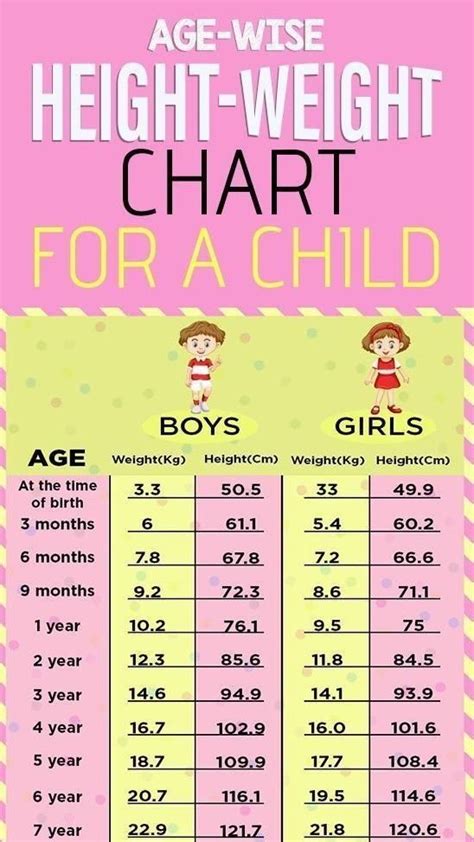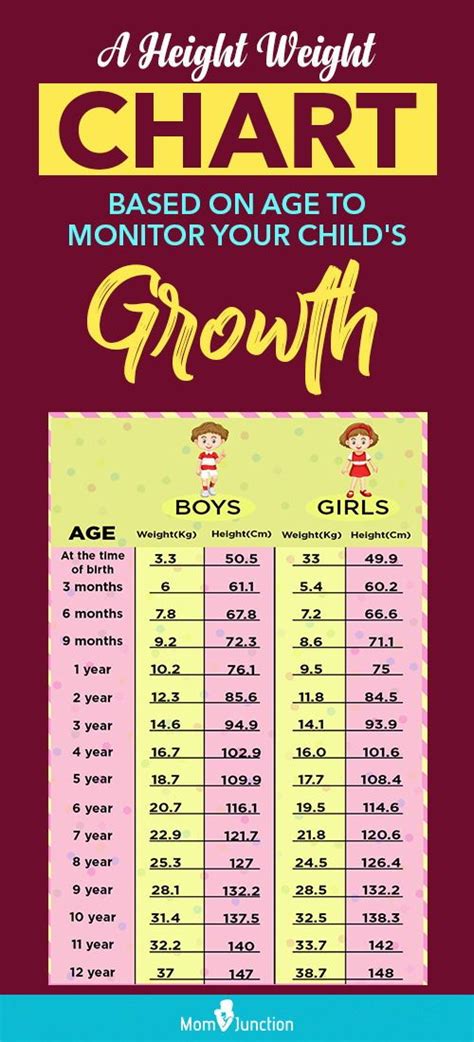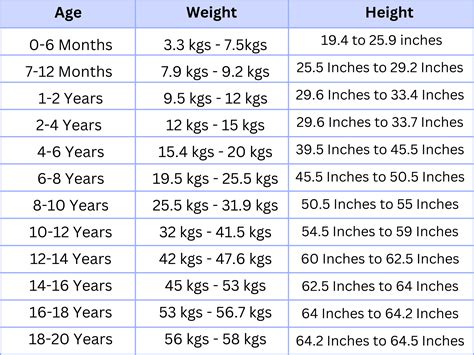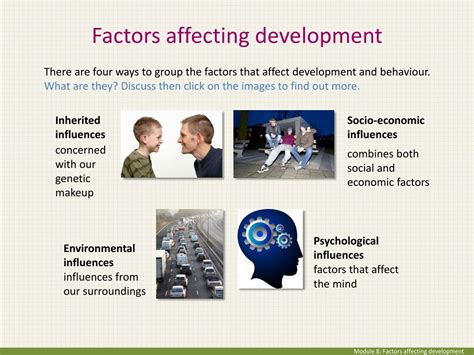Intro
Track your childs growth with our comprehensive Childrens Height and Weight Chart Guide, featuring percentile charts, BMI calculators, and healthy development tips for kids, including infant, toddler, and adolescent stages.
As a parent, it's natural to be curious about your child's growth and development. One of the most common concerns is whether your child is growing at a healthy rate. Monitoring your child's height and weight is an essential part of tracking their overall health and development. In this article, we will delve into the world of children's height and weight charts, exploring their importance, how to use them, and what they can tell you about your child's health.
Growth charts have been used for decades to track the growth and development of children. These charts are designed to provide a visual representation of a child's growth over time, allowing parents and healthcare professionals to identify any potential issues early on. By monitoring your child's height and weight, you can gain valuable insights into their overall health, including their risk of developing certain health conditions, such as obesity or growth disorders.
Understanding how to use a children's height and weight chart can seem daunting, but it's actually quite straightforward. These charts typically feature a series of curves that represent the average height and weight for children of different ages and sexes. By plotting your child's measurements on the chart, you can see how they compare to other children of the same age and sex. This information can be incredibly valuable, as it allows you to identify any potential issues early on and take steps to address them.
Introduction to Children's Height and Weight Charts

Children's height and weight charts are designed to provide a comprehensive overview of a child's growth and development. These charts are typically divided into two main sections: one for height and one for weight. The height section features a series of curves that represent the average height for children of different ages and sexes. The weight section features a similar series of curves, representing the average weight for children of different ages and sexes.
How to Use a Children's Height and Weight Chart
To use a children's height and weight chart, you'll need to take your child's measurements regularly. This typically involves measuring their height and weight at regular intervals, such as during routine check-ups with their healthcare provider. Once you have your child's measurements, you can plot them on the chart to see how they compare to other children of the same age and sex.Benefits of Using a Children's Height and Weight Chart

There are several benefits to using a children's height and weight chart. One of the most significant advantages is that it allows you to track your child's growth and development over time. By monitoring your child's height and weight, you can identify any potential issues early on and take steps to address them. This can be especially important for children who are at risk of developing certain health conditions, such as obesity or growth disorders.
Some of the other benefits of using a children's height and weight chart include:
- Tracking growth and development: Children's height and weight charts provide a comprehensive overview of a child's growth and development, allowing you to track their progress over time.
- Identifying potential issues: By monitoring your child's height and weight, you can identify any potential issues early on and take steps to address them.
- Monitoring nutrition and diet: Children's height and weight charts can help you monitor your child's nutrition and diet, ensuring they are getting the nutrients they need to grow and develop healthily.
- Encouraging healthy habits: By tracking your child's growth and development, you can encourage healthy habits, such as regular exercise and a balanced diet.
Understanding Percentiles
When using a children's height and weight chart, it's essential to understand percentiles. Percentiles represent the percentage of children who are below a certain height or weight. For example, if your child is in the 50th percentile for height, it means that 50% of children of the same age and sex are below their height, and 50% are above.Interpreting Children's Height and Weight Charts

Interpreting children's height and weight charts can seem daunting, but it's actually quite straightforward. Here are some tips to help you get started:
- Look for the percentile lines: Children's height and weight charts feature a series of percentile lines, representing the percentage of children who are below a certain height or weight.
- Plot your child's measurements: Once you have your child's measurements, plot them on the chart to see how they compare to other children of the same age and sex.
- Monitor progress over time: It's essential to monitor your child's progress over time, rather than focusing on a single measurement.
Some of the things you can learn from interpreting children's height and weight charts include:
- Growth patterns: By monitoring your child's growth over time, you can identify any patterns or trends that may indicate a potential issue.
- Nutrition and diet: Children's height and weight charts can help you monitor your child's nutrition and diet, ensuring they are getting the nutrients they need to grow and develop healthily.
- Risk of health conditions: By tracking your child's growth and development, you can identify any potential risks for certain health conditions, such as obesity or growth disorders.
Common Growth Patterns
There are several common growth patterns that you may notice when using a children's height and weight chart. These include: * Steady growth: Most children will experience steady growth over time, with their height and weight increasing at a consistent rate. * Growth spurts: Some children may experience growth spurts, where their height and weight increase rapidly over a short period. * Plateaus: Some children may experience plateaus, where their growth slows down or stops for a period.Factors That Influence Growth and Development

There are several factors that can influence growth and development in children. These include:
- Genetics: Genetics play a significant role in determining a child's growth and development, with some children inheriting certain traits from their parents.
- Nutrition and diet: A balanced diet that includes all the necessary nutrients is essential for healthy growth and development.
- Environment: The environment in which a child grows up can also influence their growth and development, with factors such as socioeconomic status and access to healthcare playing a role.
- Health conditions: Certain health conditions, such as growth disorders or chronic illnesses, can also influence a child's growth and development.
Monitoring Growth and Development
Monitoring growth and development is an essential part of ensuring your child is healthy and thriving. Here are some tips to help you get started: * Schedule regular check-ups: Regular check-ups with your child's healthcare provider are essential for monitoring their growth and development. * Track measurements: Keep a record of your child's measurements, including their height and weight, to track their progress over time. * Look for signs of potential issues: Be aware of any signs of potential issues, such as slow growth or developmental delays, and seek medical attention if you have any concerns.Conclusion and Next Steps

In conclusion, children's height and weight charts are a valuable tool for monitoring growth and development in children. By understanding how to use these charts and interpreting the results, you can gain valuable insights into your child's health and development. Remember to schedule regular check-ups with your child's healthcare provider, track measurements, and look for signs of potential issues.
We hope this article has provided you with a comprehensive overview of children's height and weight charts and how to use them. If you have any further questions or concerns, please don't hesitate to reach out. We encourage you to share this article with others who may find it helpful and to take the next steps in monitoring your child's growth and development.
What is a children's height and weight chart?
+A children's height and weight chart is a tool used to track the growth and development of children, providing a comprehensive overview of their height and weight over time.
How do I use a children's height and weight chart?
+To use a children's height and weight chart, you'll need to take your child's measurements regularly and plot them on the chart to see how they compare to other children of the same age and sex.
What can I learn from a children's height and weight chart?
+By using a children's height and weight chart, you can learn about your child's growth patterns, nutrition and diet, and risk of health conditions, as well as monitor their progress over time.
